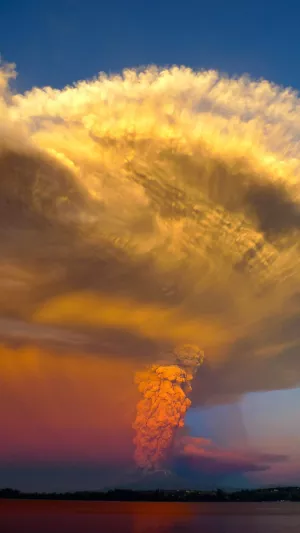When it comes to volcanic eruptions, many people are familiar with them due to the extensive coverage on social media and news outlets.
For humans, volcanic eruptions are often synonymous with disaster, but the underlying reasons for these natural events are not always well understood. Let's explore the causes and effects of volcanic eruptions.
Volcanic eruptions are primarily driven by the gas pressure within the molten rock, or magma, inside a volcano. The intensity of an eruption depends on the level of this gas pressure. High gas pressure can lead to violent eruptions, which can be catastrophic if they occur near densely populated areas. The substances expelled during a volcanic eruption typically include lava, toxic gases, rocks, and ash.
Another significant cause of volcanic eruptions is the interaction between tectonic plates. The boundaries where these plates meet are often sites of intense geological activity.
The friction between converging plates generates substantial heat, leading to localized high temperatures. Additionally, the dehydration of water-containing minerals lowers the melting point of rocks, facilitating the formation of magma and resulting in volcanic eruptions.
Volcanic eruptions can be categorized based on factors such as the type of magma and the eruption environment. One notable type is the fissure eruption, where magma surfaces through cracks in the Earth's crust without an explosive event.
These eruptions often produce stable, extensive lava flows with minimal volcanic debris. Fissure eruptions are commonly found on the ocean floor and contribute to the process of seafloor spreading.
Similar to earthquakes, volcanic eruptions are classified by their magnitude. The Volcanic Explosivity Index (VEI) ranges from 1 to 8, with each increment representing a tenfold increase in eruption power.
For instance, an eruption with a VEI of 8 can release over 1,000 cubic kilometers of magma and produce a volcanic plume that reaches the mesosphere, affecting the region where auroras occur. Such a colossal eruption could potentially trigger mass extinctions, eradicating numerous species.
volcanic eruptions
Video: TED-Ed
The most significant and devastating volcanic eruption in modern history occurred on August 27, 1883, when Krakatoa in Indonesia erupted. This cataclysmic event obliterated two-thirds of the island and claimed over 36,000 lives. The eruption's force was so immense that it generated shock waves felt around the globe and caused dramatic climatic effects.
In the aftermath of a powerful volcanic eruption, the resulting ash can blanket vast areas, transported by prevailing winds. This ash can be incredibly destructive, capable of burying entire villages.
The high temperature of volcanic ash can cause severe burns and fatalities. Moreover, inhaling volcanic ash poses serious health risks, leading to respiratory problems and even suffocation.
Volcanic eruptions also have profound impacts on global climate. The massive amounts of ash and gases ejected into the atmosphere can lead to prolonged periods of dim sunlight and severe weather disturbances.
Residents often endure months of ash fallout, leading to "muddy rain" and other hazardous conditions. Additionally, volcanic ash and gases at high altitudes can be dispersed by global wind patterns, reducing solar radiation and causing temperatures to drop.
While volcanic eruptions are natural processes resulting from dynamic activity within the Earth's crust, their effects on human life and the environment can be severe and far-reaching.
Understanding the mechanisms behind volcanic eruptions and their potential impacts is crucial for mitigating their destructive consequences and preparing for future events.





